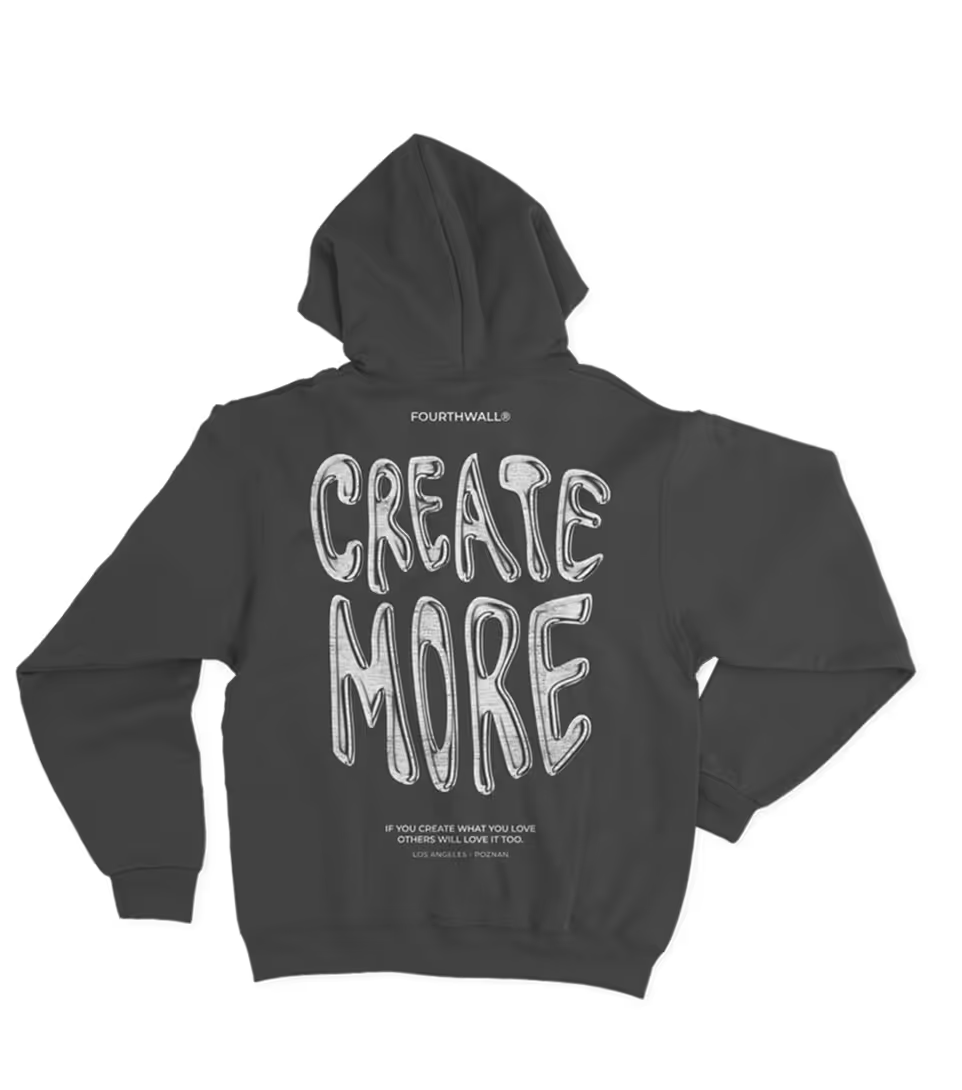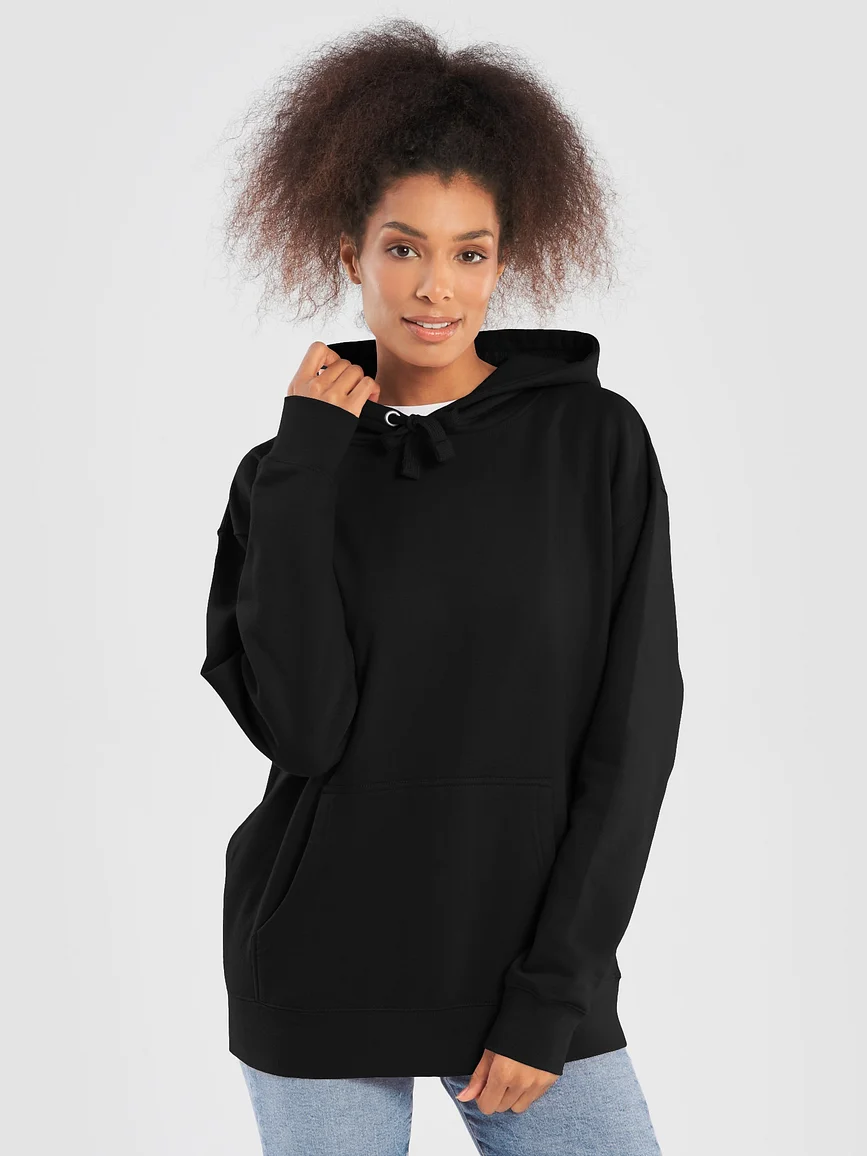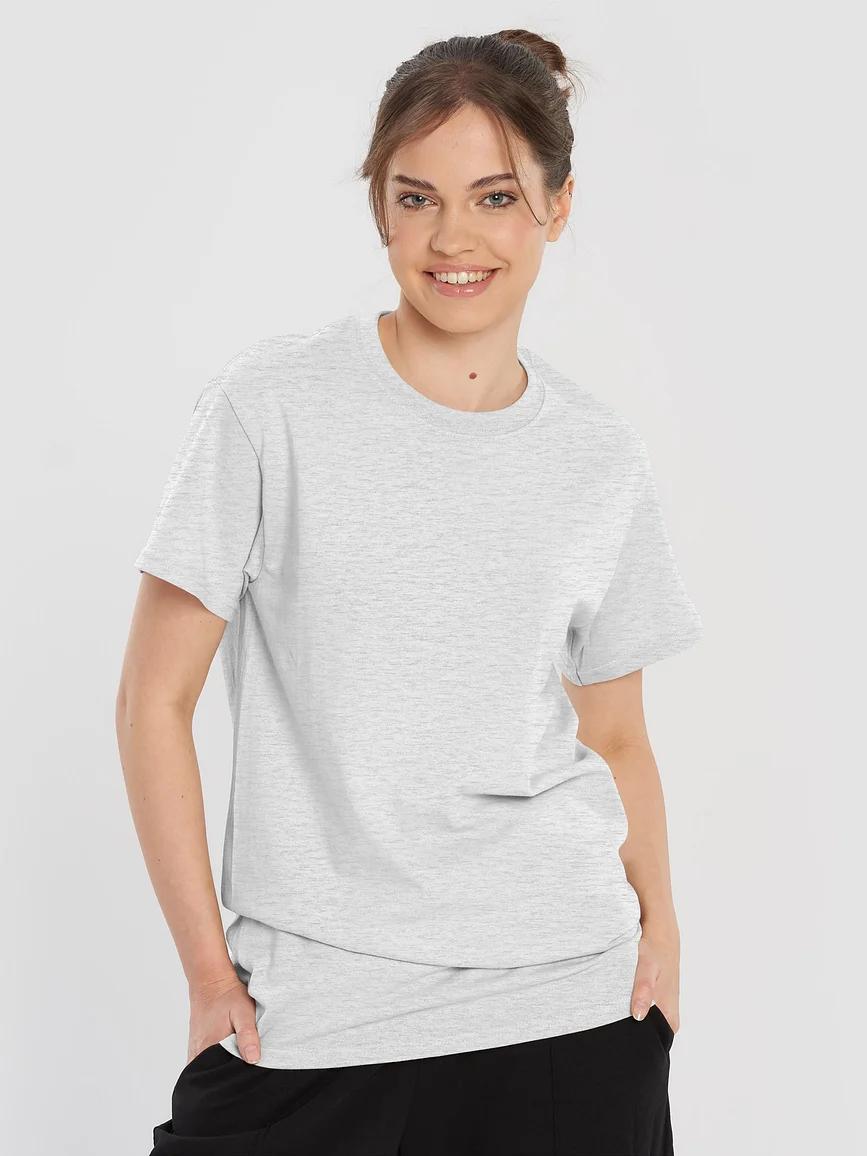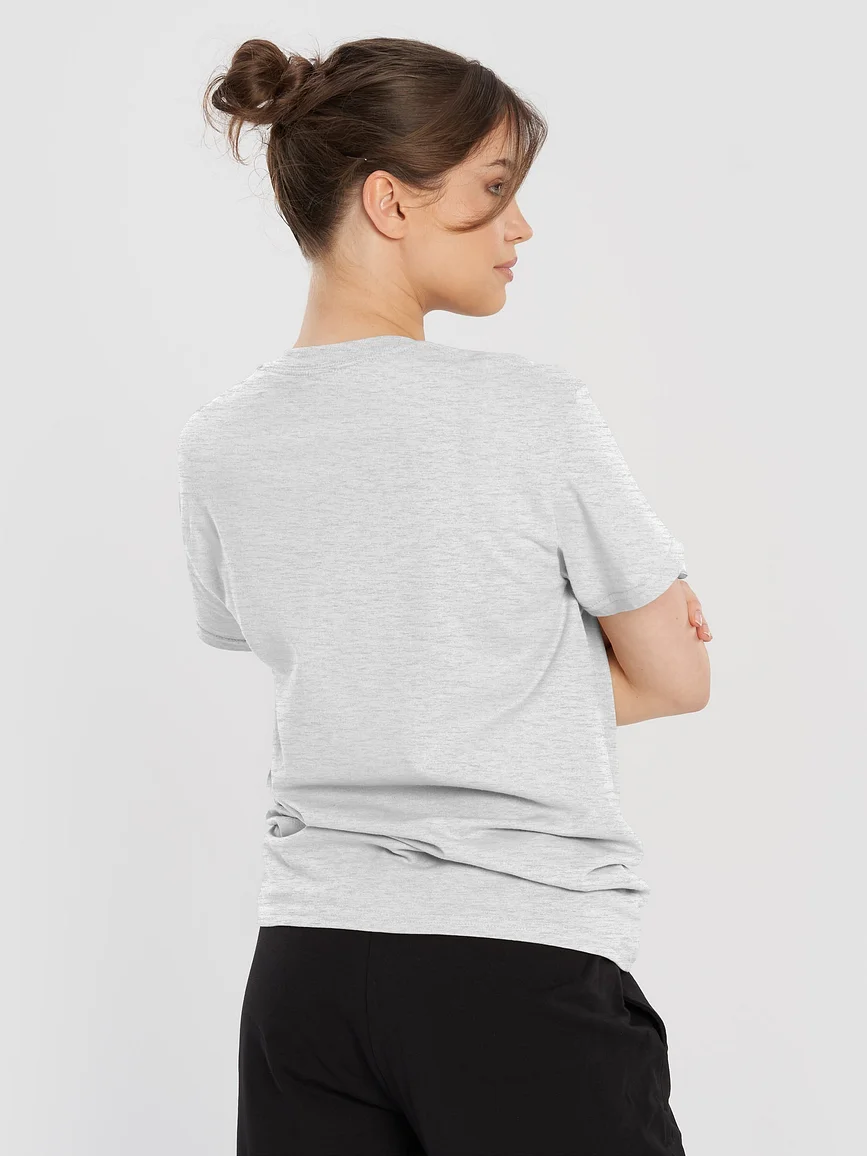Innovative Approaches to Website Designs
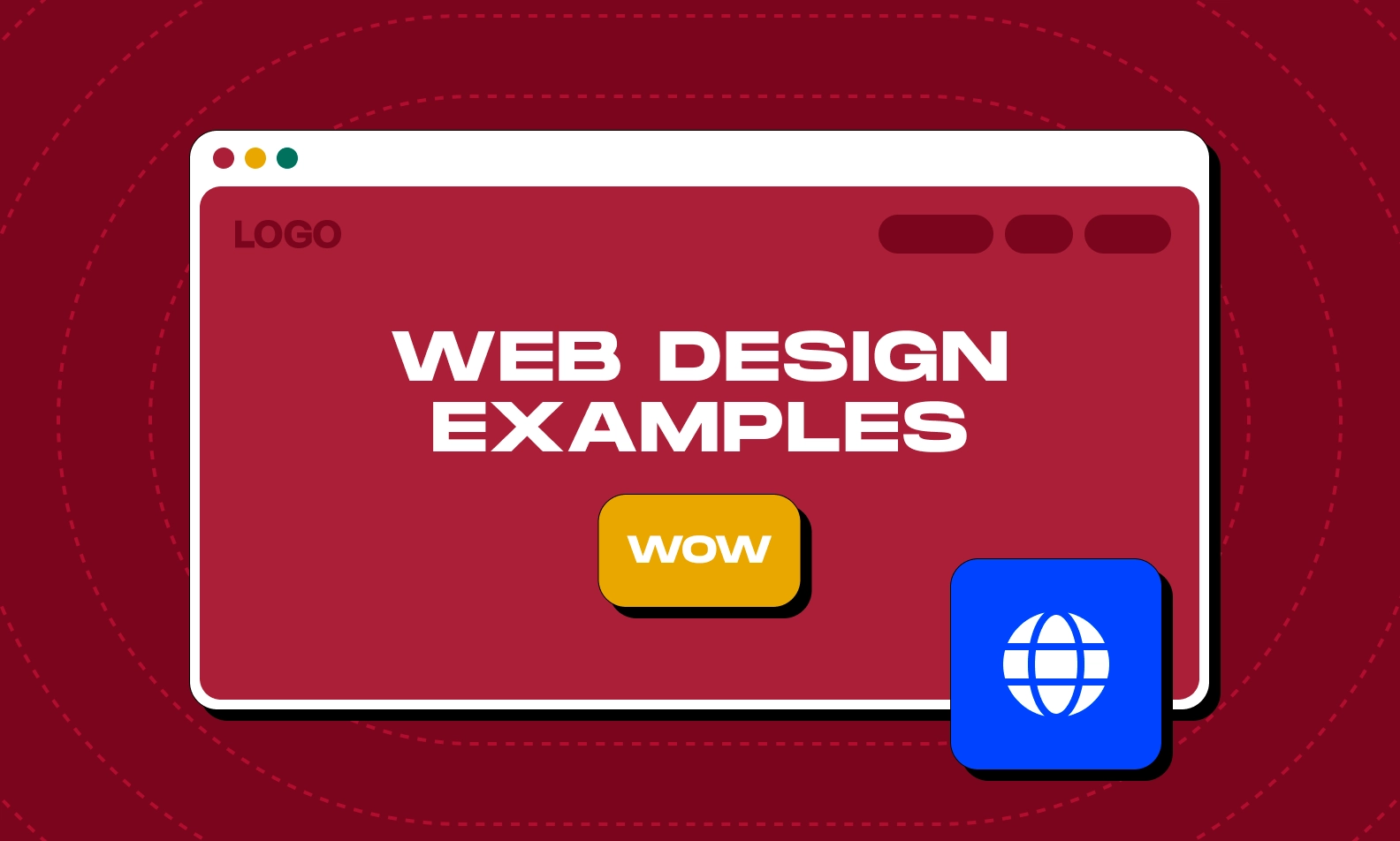
In an era where online presence is often the first point of contact between creators and potential fans or clients, the significance of leaving a lasting impression cannot be overstated. A well-designed website can bridge this gap, fostering a closer connection between creators and their audiences.
For a diverse range of content creators, be it artists, writers, musicians, or entrepreneurs, their website serves as a versatile platform. It not only allows them to express their unique brand identity but also to showcase their work and foster engagement within their communities.
A stunning web design not only captures attention but also communicates the creator's personality, values, and passion, fostering a sense of authenticity and trust.
In this article, we'll delve into the crucial role of website design for content creators, offering actionable tips and real-world examples to inspire and empower them to take their online presence to new heights.
Whether you're embarking on a new website redesign or starting from scratch, understanding the importance of effective design principles and harnessing the power of creativity can be the catalyst for success in today's competitive digital landscape.
Benefits of Having a Well-Designed Website
Having a well-designed website is crucial for any business or creator looking to establish a strong online presence and achieve their goals. Here's a detailed breakdown of the benefits:
Creates A Great First Impression
Your website is more than just a digital storefront; it's a platform to help showcase your brand’s identity.
Having a visually appealing and user-friendly interface not only captivates the user's attention but also communicates professionalism and attention to detail.
Every element, from the color palette and typography to the imagery and messaging, should be carefully curated to convey your brand's personality, values, and unique selling points.
When visitors encounter a website that is aesthetically pleasing, easy to navigate, and informative, they are immediately reassured of your brand's credibility and reliability.
This positive first impression fosters trust and confidence in your brand or persona, making potential customers more inclined to engage with your products or services.
Search Engine Optimization (SEO)
Search engines favor well-designed websites that provide a positive user experience.
Elements such as fast loading times, mobile responsiveness, and structured data markup contribute to a positive user experience, which search engines prioritize in their rankings.
When your website is optimized for SEO, it becomes more discoverable to potential visitors and appears higher in search engine results pages (SERPs) for relevant queries.
This increased visibility translates into organic traffic, as users are more likely to click on websites that appear at the top of search results.
Provides 24/7 Accessibility
Unlike physical stores or offices, your website is accessible 24/7, allowing visitors to engage with your content, make purchases, or contact you at any time.
This accessibility not only enhances convenience for customers, who can engage with your content on their own schedule but also presents a lucrative opportunity for making sales outside of normal business hours.
By removing these constraints, your website empowers you to capture valuable leads and facilitate transactions around the clock, ensuring that you never miss out on potential opportunities for growth and revenue generation.
Cost-Effective Solution
Investing in a well-designed website is often more cost effective than traditional marketing methods.
Once set up, your website can serve as a central hub for all your online activities, reducing the need for costly print ads, brochures, or physical storefronts.
With minimal ongoing maintenance expenses, your website offers a sustainable and scalable solution for reaching and engaging with your target audience.
This will help you deliver a higher return on investment over time while freeing up resources to be allocated towards other critical areas of your business.
Analytics and Insights
Most modern websites come with built-in analytics tools that provide valuable insights into visitor behavior, demographics, and preferences.
Leveraging these built-in analytics tools empowers businesses to refine their marketing strategies, optimize website performance, and make data-driven decisions for growth.
By delving into this data, organizations gain a profound understanding of their audience's interactions, enabling them to tailor their offerings, enhance user experiences, and stay ahead in today's competitive digital landscape.
Flexibility and Scalability
A well-designed website can easily adapt to your evolving needs and scale alongside your business. This empowers organizations to effortlessly integrate new products, expand services, or revamp brand identities without encountering significant hurdles.
Creating a scalable architecture for your website ensures that as your business grows, your digital presence can effortlessly handle increased traffic, transactions, and content volume.
This scalability not only future-proofs your online platform but also fosters agility, allowing you to swiftly respond to market demands and capitalize on emerging opportunities.
Whether it's accommodating new offerings or adapting to shifting market dynamics, a flexible and scalable website serves as a dynamic cornerstone of your digital strategy, ensuring sustained growth and relevance in an ever-changing landscape.
Best Website Design Examples to Get You Inspired
Before delving into the design process for your website, it's crucial to invest time in researching and gathering inspiration from other platforms.
Exploring a diverse range of website designs can provide valuable insights and ideas that can inform your own creative direction. Here are a few examples of creative website designs to help get your creative juices flowing:
RCA Records
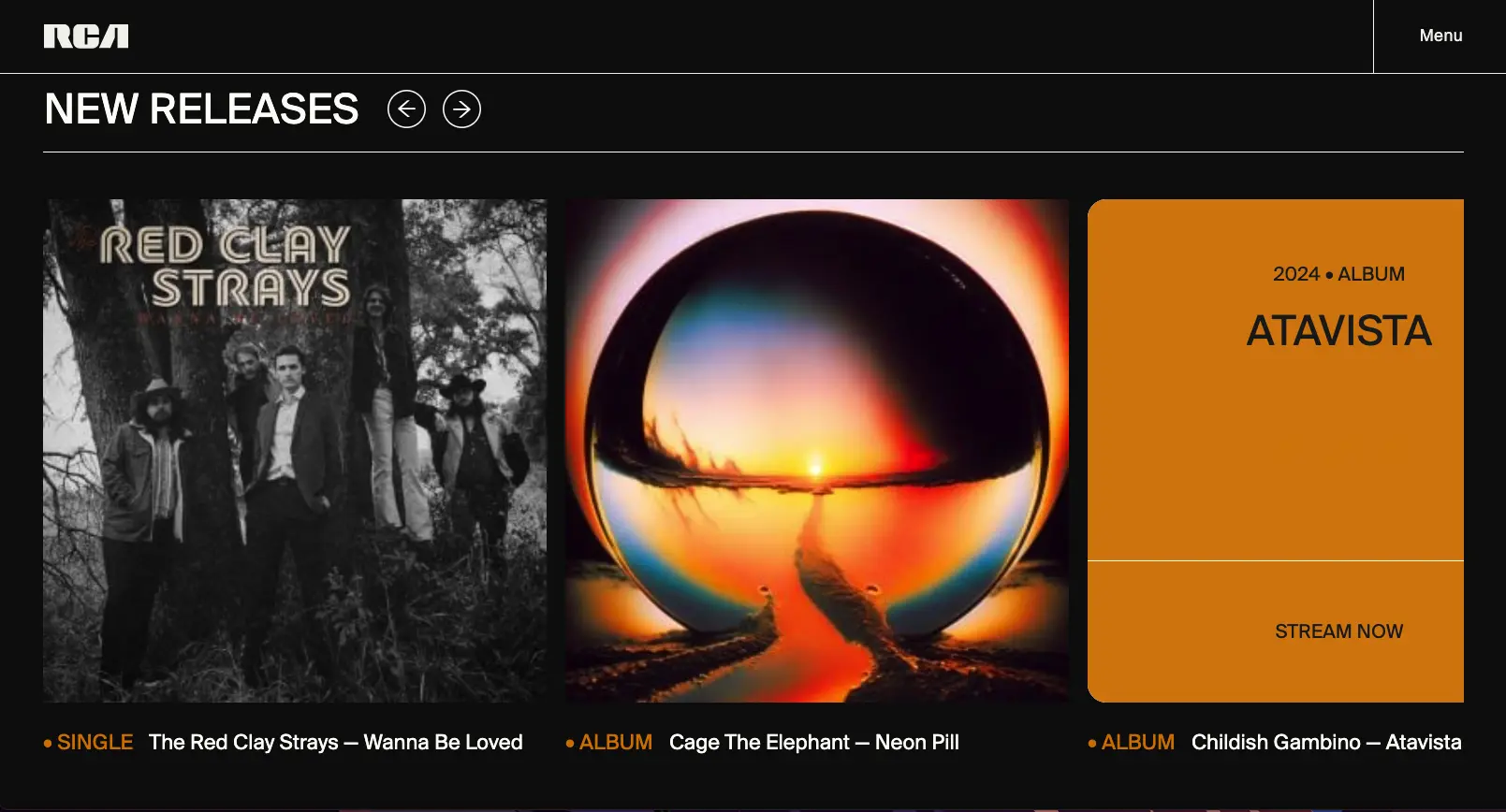
RCA Records' website design is a testament to its artistic excellence, featuring stunning graphics and an intuitive layout.
Its sleek design and bold colors create a visually engaging experience that appeals to both fans and artists alike.
The homepage showcases new releases prominently, with easy navigation to explore various artists, news, and merchandise.
The consistent use of high-quality images and interactive elements throughout the site reinforces RCA's brand identity, making it a dynamic platform for music lovers and industry professionals.
Airbnb
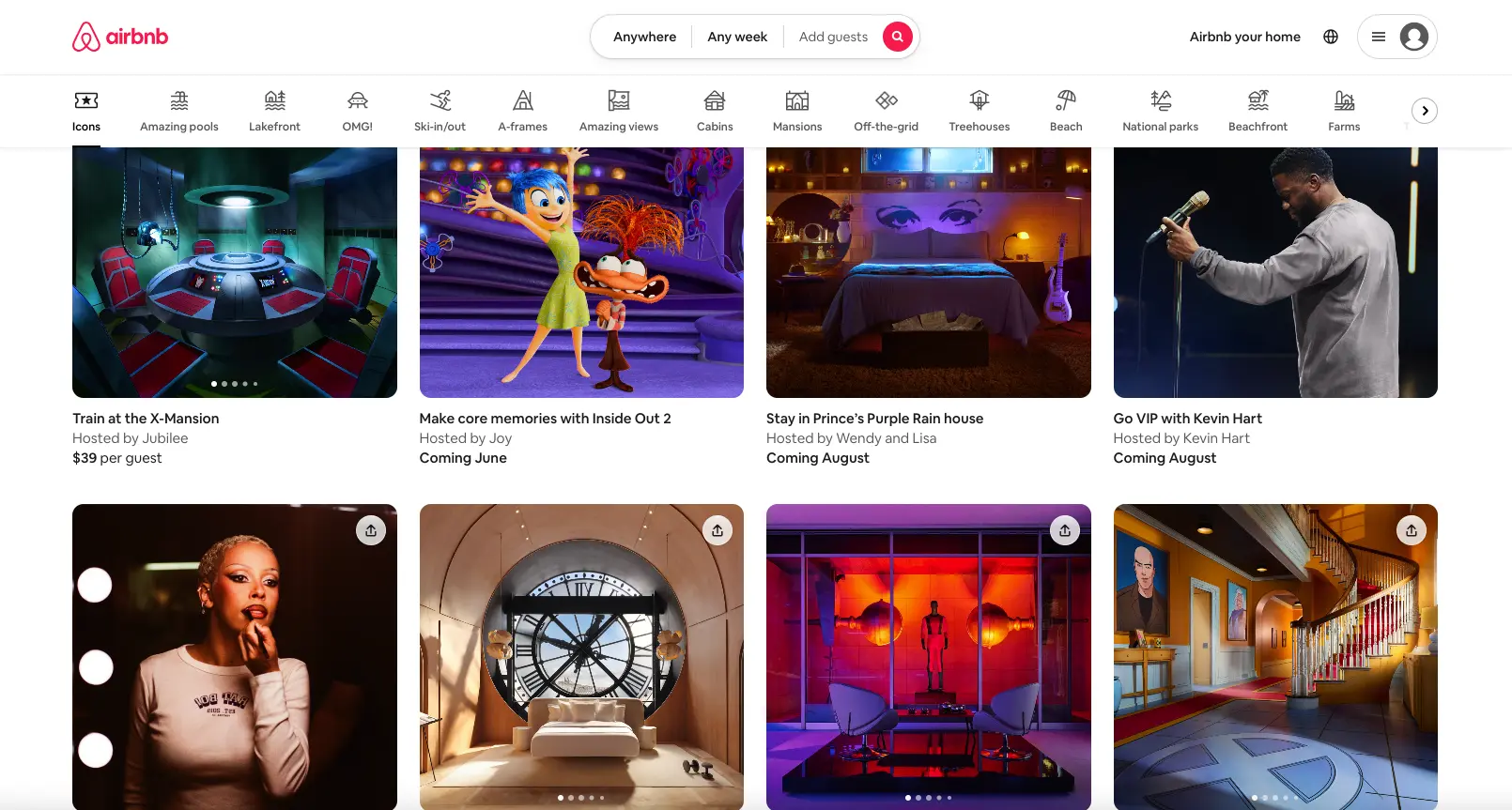
Airbnb's website design is characterized by its clean layout and intuitive navigation, mirroring the company's commitment to facilitating seamless home-sharing experiences.
The interface allows users to effortlessly explore a wide array of accommodations worldwide, with filters and sorting options ensuring tailored search results.
Emphasizing transparency and trust, each listing is accompanied by detailed descriptions, high-quality photos, and reviews, empowering users to make informed decisions.
This user-centric approach fosters a sense of community and fosters a sense of belonging, aligning with Airbnb's core values of connection and belonging.
Danielle Allard
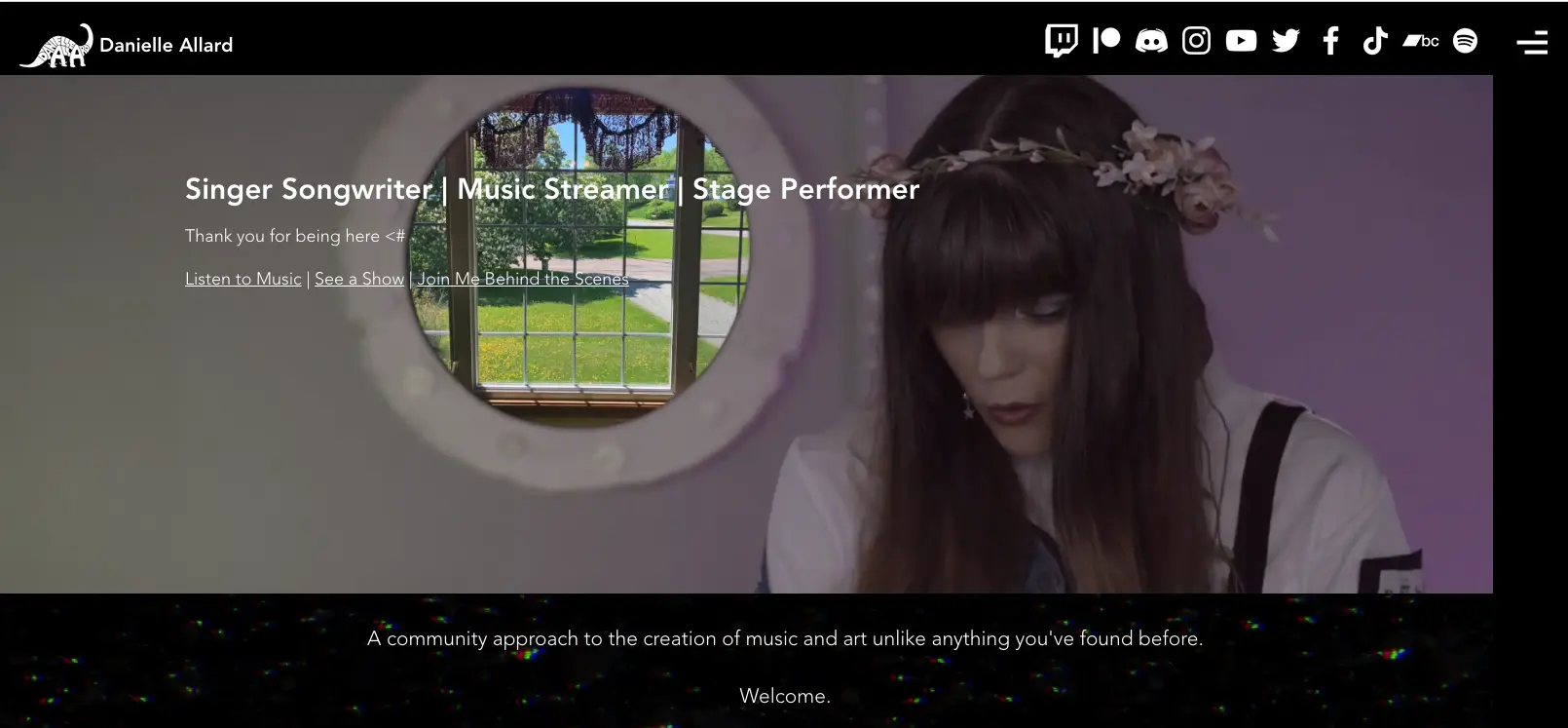
Danielle Allard, a talented musician and streamer, ingeniously integrates creative calls to action (CTAs) across her website, enhancing user engagement and interaction. Upon visiting her website, users are immediately greeted with a visually appealing layout that encapsulates Allard's artistic flair.
One notable feature is her seamless integration of various multimedia elements, including videos, graphics, and vibrant imagery, effectively showcasing her diverse talents and repertoire.
Moreover, Allard CTAs prompt visitors to explore the site's extensive features, such as her Membership tier, past live streams, and merchandise shop.
Allard’s strategic placement not only encourages active participation with her viewers but also cultivates a sense of connection among her members.
Squarespace
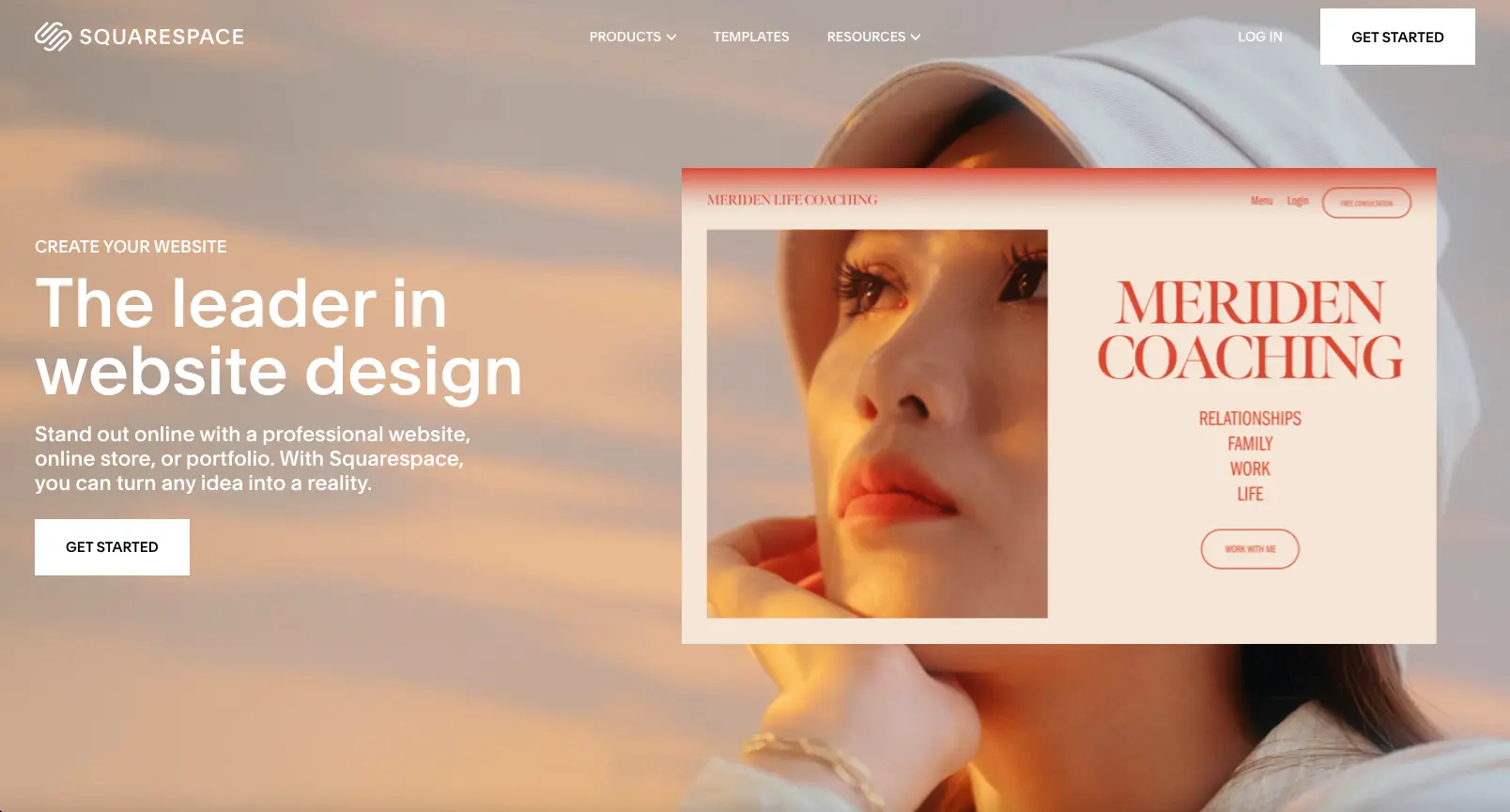
Squarespace, renowned for its website-building capabilities, paradoxically serves as a prime example of exceptional website design.
Its visually captivating layout design seamlessly integrates modern aesthetics with user-friendly functionality, embodying the platform's commitment to empowering users in crafting stunning online presences.
Noteworthy features include its intuitive drag-and-drop interface, which simplifies the website creation process, and its extensive library of customizable templates tailored for various purposes, from e-commerce to portfolio showcases.
Furthermore, Squarespace's emphasis on responsive design ensures that websites created on its platform are optimized for viewing across different devices, enhancing accessibility and user experience.
10 Tips for Designing Your Website
Here are tips for developing a beautiful website:
1. Define Your Objectives
Defining your objectives is the foundational step in website design, as it sets the direction for all subsequent decisions.
Whether your value proposition is to sell products, showcase a portfolio, disseminate information, or entertain audiences; clarifying this purpose is paramount.
Understanding the primary objective enables creators to tailor every aspect of the website, from layout and content to functionality and user experience, to effectively achieve those goals.
For instance, an e-commerce website would prioritize clear product displays, streamlined checkout processes, and persuasive CTAs, while a portfolio website might focus on visually compelling showcases and easy navigation to highlight the creator's work.
By defining objectives upfront, creators ensure that their websites effectively serve their intended purposes, maximizing their impact and relevance to their target audience.
2. Know Your Audience
Conduct thorough research to understand your target audience's demographics, preferences, and behaviors.
This includes factors such as age, gender, location, interests, and browsing habits. Armed with this knowledge, creators can tailor their website design to specifically address their audience's needs and expectations.
For example, if your target audience consists mainly of young adults interested in technology, incorporating modern design elements, interactive features, and mobile optimization would likely resonate well.
By aligning your design with your audience's preferences and behaviors, you create a more engaging and relevant user experience that fosters connection and encourages interaction.
3. Choose The Right Website Builder
A comprehensive website builder should offer intuitive tools and features that empower creators to bring their vision to life without the need for extensive coding knowledge.
Remember to consider factors such as pricing, customer support, and integration capabilities with third-party tools and services that can further enhance your website-building experience
A good website builder should not only provide intuitive tools for designing and editing your site but also offer flexibility and scalability to accommodate future growth and changes.
With Fourthwall, creators can easily design customizable sites that reflect their brand while seamlessly integrating features like product showcases, secure payment gateways, and inventory management tools. Fourthwall gives you full control of your online store with a no-code custom e-commerce website builder, making it easy to launch your own merch shop.
By selecting the right website builder, you can streamline the design process, save time and resources, and ensure that your website effectively communicates your brand identity and engages your target audience.
4. Layout and User Experience (UX)
Before creating your website, it's crucial to sketch a layout to help you conceptualize its structure.
This initial step lays the foundation for organizing content and visual elements across key pages such as the homepage, landing pages, and beyond. Once you have a clear outline, you can then proceed to design each component with user experience at the forefront.
Consider factors like parallax scrolling, navigation, and other responsive web design features that adapt to different devices and screen sizes, providing your viewers with a consistent user experience.
In addition, incorporating multimedia elements like graphics, animation, and videos into your web design can help elevate your site to new heights.
By prioritizing user experience and crafting a well-thought-out layout, you enhance visual appeal, streamline navigation, promote engagement, and ultimately create a positive impression that encourages visitors to explore further and take desired actions.
5. Optimize CTA (Call-to-Actions)
Optimizing your CTA (Call-to-Action) is crucial for guiding visitors toward desired actions and enhancing your website's overall effectiveness.
To design clear and compelling CTAs, use contrasting colors that make them stand out against the background and surrounding elements, ensuring they catch the visitor's eye.
Employ concise, action-oriented language that clearly communicates the benefit or next step, such as "Buy Now," "Subscribe," or "Learn More." Place CTAs strategically in high-visibility areas, like on top of your your homepage, at the end of blog posts, or within sections where decision-making occurs.
Additionally, maintain consistency in branding elements such as colors, fonts, and imagery throughout the website to reinforce your brand identity and create a cohesive user experience.
Having consistent design elements throughout your website not only strengthens brand recognition but also builds trust and familiarity, making visitors more likely to engage with your CTAs and follow through on the intended actions.
6. Make Sure It’s SEO-Friendly
Making your website SEO-friendly is vital for enhancing its visibility on search engines and attracting organic traffic. Implementing SEO best practices involves several key components.
First, use descriptive page titles and meta descriptions that accurately reflect the content and include relevant keywords to help search engines understand and rank your pages.
Second, ensure clean URL structures that are easy to read and include keywords, aiding both search engines and users in navigating your site.
Additionally, you should incorporate header tags (H1, H2, etc.) to organize content hierarchically, optimize images with alt text for better indexing, and maintain fast loading times by optimizing your site's performance.
Update your content regularly to keep it fresh and relevant, and use internal linking to improve site structure and user experience.
7. Focus on Speed
Optimizing for fast loading times significantly enhances user experience and improves search engine rankings.
To achieve this, start by minimizing image sizes through compression and using modern formats like WebP, which reduce file size without sacrificing quality. Implement browser caching to store static files locally on users' devices, allowing for quicker loading on subsequent visits.
Additionally, leverage Content Delivery Networks (CDNs) to distribute your content across multiple servers worldwide, ensuring faster access by reducing the distance data must travel.
Streamline your code by removing unnecessary scripts and CSS, and enable lazy loading for images and videos to defer loading until they are needed.
By prioritizing these techniques, you not only improve page speed but also reduce bounce rates, increase visitor engagement, and enhance overall site performance, thereby creating a more efficient and satisfying experience for users.
8. Utilize White Space
By incorporating ample white space (or negative space) around text, images, and other elements, you create a clean, organized layout that prevents clutter and reduces cognitive load for visitors.
This strategic use of space helps guide the user's attention to key content and CTAs, making it easier for them to navigate and absorb information.
White space also contributes to a more aesthetically pleasing design, providing a sense of elegance and simplicity that can elevate your brand's perception.
Avoiding overcrowded layouts not only makes your website more visually appealing but also improves the overall user experience by fostering a sense of calm and focus, encouraging visitors to stay longer and engage more deeply with your content.
9. Incorporate Feedback Mechanisms
Incorporating feedback mechanisms is essential for continuously enhancing your website and UX design.
Integrating tools like contact forms, surveys, and chatbots onto your website allows you to create multiple channels for visitors to share their thoughts, preferences, and pain points.
Contact forms provide a straightforward way for users to reach out with specific inquiries or issues, while surveys can gather targeted feedback on various aspects of your site, such as content relevance, usability, and overall web design.
Chatbots offer real-time interaction, addressing visitor queries instantly and collecting data on common questions and concerns.
This direct feedback is invaluable for identifying areas of improvement, understanding user needs, and making informed decisions to refine your website.
10. Regularly Perform Maintenance Checks
Maintenance checks are crucial for ensuring your website remains current, functional, and aligned with the latest design trends and technological advancements.
Scheduling these checks allows you to systematically update content, ensuring that information is accurate, relevant, and reflective of your brand's latest developments. It's also essential for fixing broken links that can frustrate users and harm your SEO and for updating software and plugins to maintain security and performance.
Regularly reviewing and addressing usability issues, such as slow loading times or confusing navigation, helps enhance the user experience and keeps visitors engaged and satisfied.
Additionally, staying abreast of new design trends and incorporating them as appropriate keeps your website visually appealing and competitive.
By committing to regular maintenance, you ensure your website remains a robust, reliable, and effective tool for achieving your business goals.
Transform Your Web Design Ideas into Reality with Fourthwall!
Now that you have gathered inspiration and equipped yourself with valuable tips, it's time to turn your web design vision into a tangible reality.
Fourthwall offers a comprehensive suite of services tailored specifically for content creators, empowering them to bring their websites to life with ease and confidence. As a dedicated creator e-commerce platform, Fourthwall streamlines the website creation process, providing intuitive tools and resources every step of the way.
From designing visually stunning layouts to seamlessly integrating e-commerce functionality for selling merchandise, Fourthwall offers a wealth of customization options to ensure that each website reflects the creator's unique brand identity.
Moreover, creators have full control over their website's domain, allowing them to establish a distinctive online presence that resonates with their audience. By joining Fourthwall, creators gain access to a supportive community and expert guidance, enabling them to unleash their creativity and build websites that truly stand out from the crowd.

